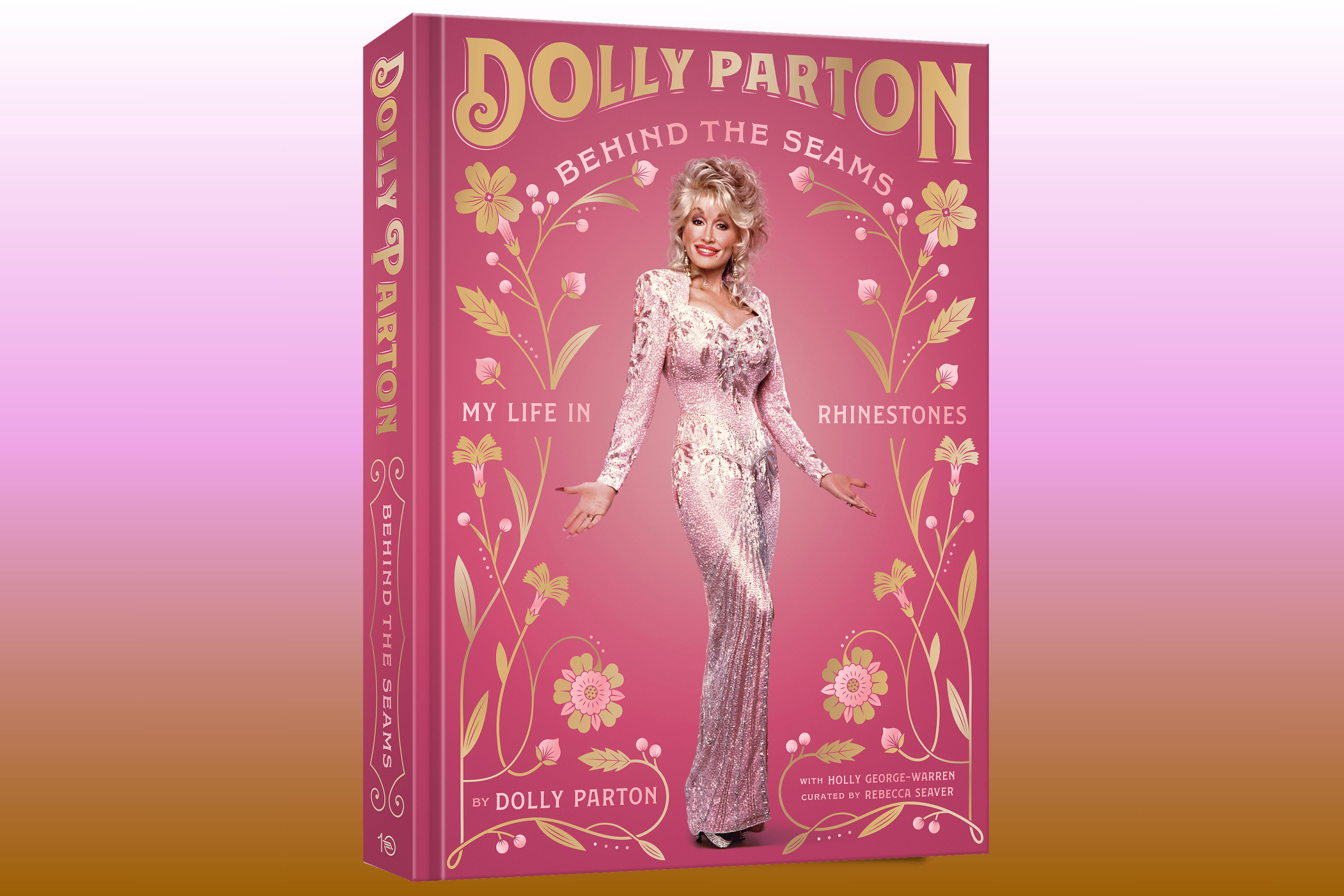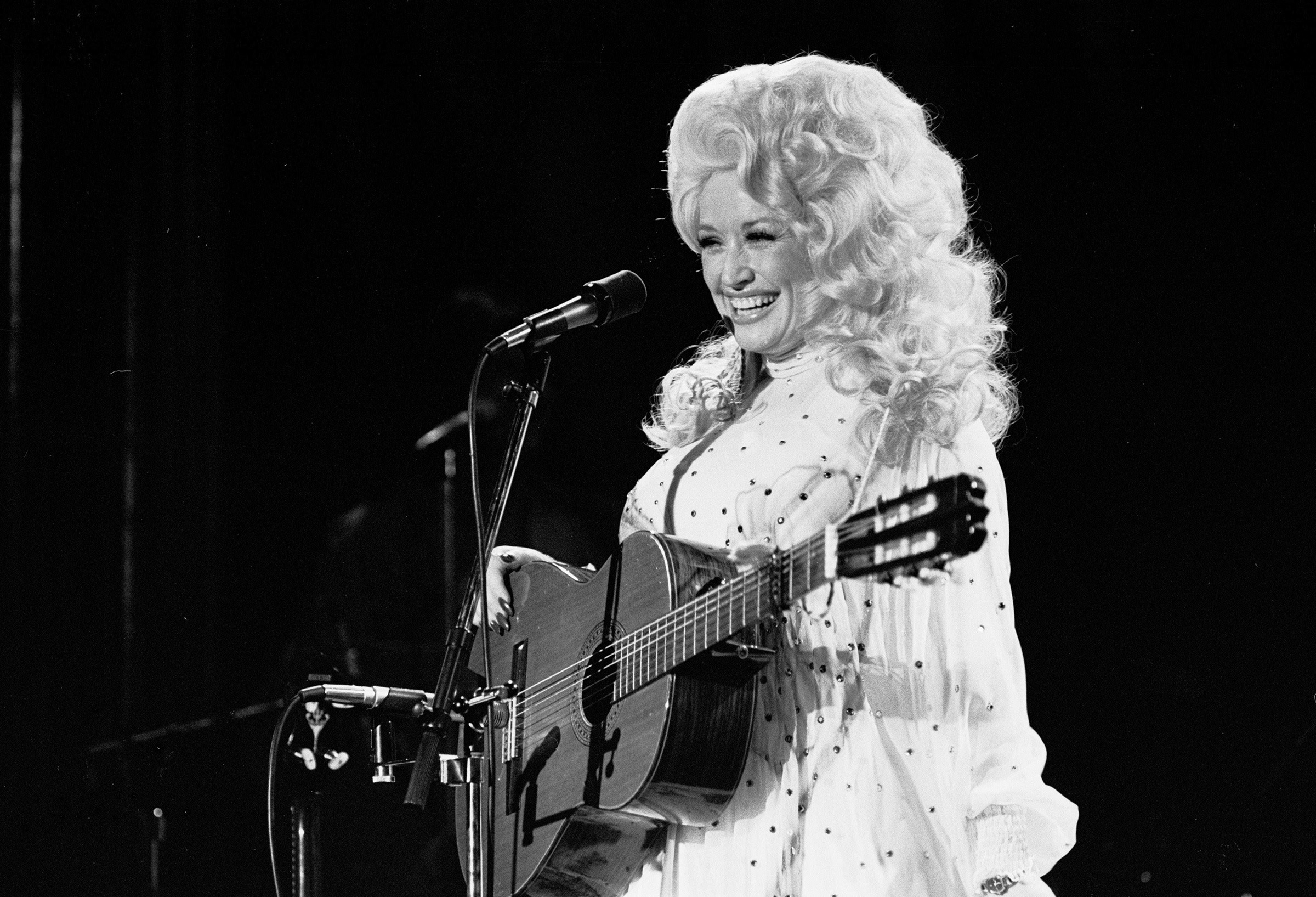When I moved to Nashville in 1964, I already had some ideas about what I wanted to look like onstage—and off. Country stars had to have big hair and some sparkles, and you had to have a Cadillac. I had the big hair but not yet the Cadillac—or enough sparkles. I related to the clothes that were worn then. The girls on the Grand Ole Opry, like Jean Shepard, dressed up.
Early on, even before I moved to Nashville, I had two musical mentors who taught me a lot: country-western performers Pearl and Carl Butler. They lived in Knoxville, and I used to work with them on Cas Walker’s TV show. Sometimes on Saturday nights, we’d sing together at a place up in Sevierville called the Pines Theater. Pearl had no children, and she took me under her wing. She’d give me small things or buy something for me to wear onstage—including a little bolero vest. I was so proud of that little bolero. Pearl and Carl Butler moved to Nashville, and they started doing pretty good with some hits like “If Teardrops Were Pennies.”
One night, I got to see them perform with a group from California called the Maddox Brothers and Rose. That’s where I got some of my showmanship. What I loved about Rose Maddox and her band of brothers was that they were the first people I’d ever seen who dressed in such colorful, sparkly Western clothes. They all wore matching outfits embroidered with cacti and flowers and all kinds of things. I loved those fancy clothes. I never wore that kind of Western stuff, but I did like the shine.
Read More: Dolly Parton Starred in Her Own Celebrity-Filled Grammys Tribute Performance
I remember that feeling of first standing onstage in show clothes. When I was around 12 or 13, visiting Nashville with my uncle Bill, I got to sing on the Opry on a Friday night. I wore a little blue-checked satin dress with a lace collar that my uncle Lester had gotten me. I got three encores that night.
By the time I was 15, Uncle Bill and I were making the rounds in Nashville trying to get me a record deal. I never wore just “whatever.” I’d wear my very best-fitting clothes, in what I thought were my best colors, red (of course!) and blue. When I was 15, I made a 45 rpm record for Mercury Records. I returned home to finish school, and at my graduation, I was asked, “What are you going to do?” I said, “Be a star.” Everyone laughed, but I knew what I wanted, and I moved back to Nashville for good.

Fast-forward to 1965: I finally signed my first recording and writing contract with Monument Records. The label’s president, Fred Foster, thought that I was prettier than I really am. He even thought I could be a movie star. But he and his people wanted to change my style into a 1960s pop look. They wanted to flatten my hair. They wanted me to look more chic and wear more streamlined clothes. He had his assistant take me around, and they set me up with a good hairstylist and a wardrobe person. But I hated everything about it. I felt naked. I might as well have been naked, because they took away my own look. It was just like trying to wear your mama’s clothes when you’re little: they weren’t my clothes—that look wasn’t me.
Then they did a bunch of photos, and I hated those pictures—again because it was not me. It was like, “Where am I? I don’t like this hair. I don’t like these clothes.” I told Fred Foster, “I have to dress like me.” I kept saying, “I can’t do what I’m supposed to do as a performer if I don’t feel comfortable within my own skin. I’ll make it eventually if I’m good enough. I think I’ve got the talent if somebody hangs with me long enough.” I knew I had some other things going too. I had a nice personality, and I had a good sense of humor. I could talk to people, and I loved to write and sing. I took my music more seriously than anything!
I’m not a natural beauty. But I have my own idea of what beauty is. I try to make the most of whatever I’ve got. I take my negatives and try to make them into positives, and I always feel better being more flamboyant.
When I started wearing that big hair and my flamboyant clothes and my boobs sticking up, a lot of people said, “Dolly, you need to dress down. Nobody’s ever going to take you serious as a songwriter or a singer if you look like that, because you look more like a hooker than you do a singer.” I said, “Well, tough. This is who I am. They’ll get used to it!”
I remember having a lot of arguments about my look. I said, “Well, if you don’t want me, somebody will, because I’ve got good songs and I know how to sing them. I’ve got great ideas and I’m a creative person. I think I’ve got something more to sell than just the way I look.”
Fred Foster was just trying to help me, and at that time, a lot of people thought that I would’ve made it sooner and more easily if I had looked different. Maybe I looked cheap, but I knew I wasn’t cheap. It’s just like my song “Dumb Blonde,” my first hit record in 1967: “Just because I’m blonde / Don’t think I’m dumb / ’Cause this dumb blonde ain’t nobody’s fool.”
I knew who I was, and I knew that eventually if I had any talent at all, it would show in spite of all that.
From Behind the Seams copyright © 2023 by Dolly Parton. Published by Ten Speed Press, an imprint of Crown Publishing Group.
- Donald Trump Is TIME's 2024 Person of the Year
- Why We Chose Trump as Person of the Year
- Is Intermittent Fasting Good or Bad for You?
- The 100 Must-Read Books of 2024
- The 20 Best Christmas TV Episodes
- Column: If Optimism Feels Ridiculous Now, Try Hope
- The Future of Climate Action Is Trade Policy
- Merle Bombardieri Is Helping People Make the Baby Decision
